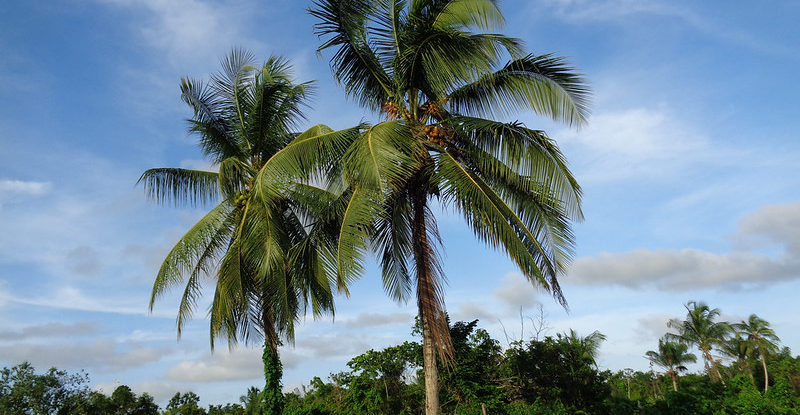
Palm trees are more than five times more numerous in such neotropical rainforests as the Amazon than in the large-scale rainforests of Africa and Asia, according to a new study.
Led by researchers from Sweden’s Uppsala University (UU) and Brazil’s University of Campinas (Unicamp), the findings shed light on the unique characteristics and contribution of the trees to tropical forest ecosystems.
They also demonstrate the importance of taking palm trees into account when estimating uptake and carbon sequestration in tropical forests and evaluating their resilience to climate change, the study states.
“To get a better understanding of tropical forests and reduce uncertainty about carbon balance in these ecosystems during climate change, we summarized data to show how the number of palms vary around the world compared with other tree species,” said UU’s Bob Muscarella, a professor in the Department of Ecology and Genetics, Plant Ecology and Evolution.
The researchers oversaw a data collection initiative, which involved more than 200 scientists in 48 countries, to survey the actual numbers of palms in tropical rainforests around the globe.
More than half of the total biomass in the Amazon rainforest is distributed among fewer than 300 tree species – including several species of palms.
Worldwide, there are more than 2,500 species of palm trees, which are more closely related to grasses than to the deciduous trees of the tropics, differing in anatomy and physiological make up.
While many palms were formerly known to prefer land with a good groundwater supply, the researchers discovered that palm trees are more plentiful in wetter areas with less fertile soils and shallower groundwater.
“The significance of the research is that it shows there are vast differences in the structure and composition of the tropical forests and thus there is no global blueprint for sustainable management,” said Terry Sunderland, a senior associate scientist with the Center for International Forestry Research (CIFOR) and professor in the Faculty of Forestry at Canada’s University of British Columbia.
“Only by undertaking such comparative research can we understand the evolutionary history of the tropics and manage the variation in composition and dynamics accordingly,” he said.
With funding from the U.S. Agency for International Development (USAID) Sunderland supported a post-doctoral student to conduct a census of plots in Cameroon, data which contributed to the palm study and fed into CIFOR’s Global Comparative Research mandate.
By drawing from existing networks of forest plots (including forestplots.net, PPBio, Rainfor, AfriTRON), the researchers compiled a massive database of more than 2,500 sample plots and then quantified palm numbers relative to other tree species.
“This study also shows that different forest types have different responses to disturbance and carbon storage potential,” Sunderland said.
“The fact that the analysis in this case was undertaken specifically with arboreal palms shows how the palm flora of the tropics varies across continents with the Amazon basin, in particular, being a vast repository for palm diversity and abundance, yet with very few taxa in Africa. Palms are iconic and great indicators of how forests have evolved over time.”
We want you to share Forests News content, which is licensed under Creative Commons Attribution-NonCommercial-ShareAlike 4.0 International (CC BY-NC-SA 4.0). This means you are free to redistribute our material for non-commercial purposes. All we ask is that you give Forests News appropriate credit and link to the original Forests News content, indicate if changes were made, and distribute your contributions under the same Creative Commons license. You must notify Forests News if you repost, reprint or reuse our materials by contacting forestsnews@cifor-icraf.org.